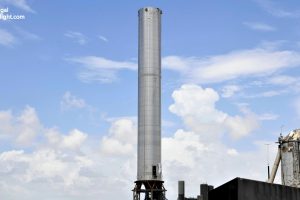- 🚀 The FAA has delayed SpaceX’s Polaris Dawn mission due to a Falcon 9 landing mishap.
- 🛰️ SpaceX experienced its first booster landing failure in three years, prompting an FAA investigation.
- ☁️ Weather concerns and entry conditions also previously delayed the Polaris Dawn mission.
- 🔍 An FAA investigation aims to identify the root cause of the landing failure and ensure public safety.
- 📉 Despite the mishap, this was an anomaly in SpaceX’s otherwise successful track record with 267 consecutive landings.
SpaceX, renowned for its groundbreaking strides in aerospace technology and efficiency in launching missions, recently faced a setback. The Federal Aviation Administration (FAA) has delayed the much-anticipated Polaris Dawn mission due to a landing mishap involving the Falcon 9 booster. This blog post delves into the events surrounding the mishap, the implications of the FAA investigation, and the prospective path forward for SpaceX.
A Brief Overview of the Incident
The Falcon 9 mishap marks the first booster landing failure SpaceX has experienced in three years, a point that underscores the company’s otherwise impeccable streak of successful landings. Specifically, this incident occurred when the Falcon 9 booster experienced a hard landing while returning to a droneship at sea after the successful orbital deployment of 21 Starlink satellites.
The Role of the FAA
Mandated Investigation
In response to the anomaly, the FAA has mandated a thorough investigation, emphasizing the need to understand the root cause of the failure. The primary objectives of this investigation are to enhance public safety, identify any potential system failures, and prevent similar events in the future.
Impact on the Polaris Dawn Mission
Delays and Constraints
Prior to the mishap, the Polaris Dawn mission had been postponed due to unfavorable weather conditions and factors related to the capsule’s splashdown position. Unlike other missions that dock at the International Space Station (ISS), the splashdown for Polaris Dawn necessitates precise weather conditions to ensure crew safety. The booster mishap and subsequent FAA investigation add another layer of delay and complexity to the timeline.
Assessing SpaceX’s Track Record
Despite the incident, it is important to highlight that this mishap is an anomaly within SpaceX’s robust record of successful launches and landings. Out of 267 consecutive successful booster landings, this mishap proves to be the exception rather than the rule, attesting to the reliable nature of SpaceX’s operational history.
Moving Forward: Implications and Safety Measures
SpaceX’s Response and Adaptations
Elon Musk, CEO of SpaceX, has emphasized the importance of identifying the specific causes of the missile landing failure. The insights drawn from the FAA investigation will play a pivotal role in implementing corrective actions and enhancing the reliability of future missions.
Broader Implications for SpaceX Launches
While the current investigation primarily focuses on the recent anomaly, the findings could introduce changes applicable across various phases of SpaceX’s launch procedures. This could include enhanced diagnostic protocols, improvements in booster recovery strategies, and refinements in safety measures.
Conclusion: The Path Ahead
As SpaceX navigates the challenges posed by the recent booster mishap and the subsequent FAA investigation, it continues to tread the frontier of space exploration with resilience and innovation. With safety as a constant priority, this incident will likely serve as a catalyst for further advancements, aligning with SpaceX’s mission to revolutionize space travel and exploration.





